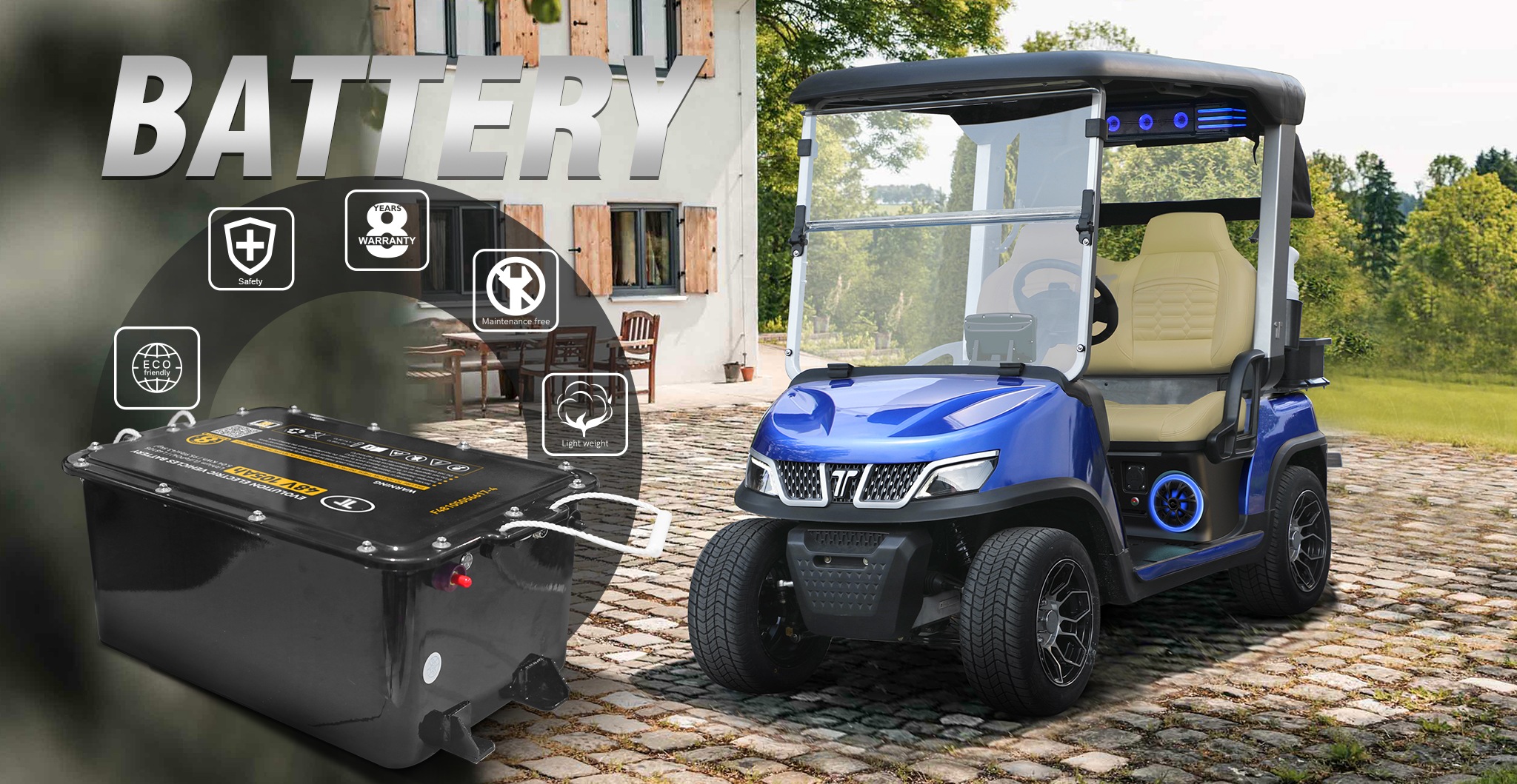Choosing the right battery is one of the most important decisions you‘ll make for your golf cart. From performance and range to cost and lifespan, batteries play a major role in determining how far, how fast, and how often you can go. Whether you‘re new to golf carts or considering a battery upgrade, this guide will walk you through everything you need to know.
What Type of Battery Is Best for a Golf Cart?
The two most common battery types used in golf carts are lead-acid and lithium-ion.
Lead-acid batteries, including flooded, AGM, and gel variants, are traditional and lower in upfront cost. However, they‘re heavier, require regular maintenance, and generally last fewer years.
Lithium batteries, especially lithium iron phosphate (LiFePO4), are lighter, maintenance-free, faster to charge, and last significantly longer.
While lead-acid batteries may suit casual users, most modern carts — such as those from Tara Golf Cart — are shifting toward lithium. They not only extend range but also deliver more consistent power, and can be monitored digitally through a Bluetooth-connected battery management system (BMS).
How Long Will a 100Ah Lithium Battery Last in a Golf Cart?
A 100Ah lithium battery typically provides 25 to 40 miles (40 to 60 kilometers) per charge, depending on driving conditions, passenger load, and terrain. For the average golf course or community commute, that translates to 2–4 rounds of golf or a full day of neighborhood driving on a single charge.
To meet a broader range of user needs, Tara Golf Cart offers lithium battery options in both 105Ah and 160Ah capacities, giving customers the flexibility to choose the right power system for their range and performance expectations. Whether you’re planning for short-distance use or extended travel, Tara’s battery solutions ensure dependable performance all day long.
If your cart is equipped with Tara‘s LiFePO4 battery system, you‘ll also benefit from smart BMS monitoring, meaning you can track battery health and usage from your smartphone in real time.
In terms of lifespan, lithium batteries can last 8 to 10 years, compared to 3 to 5 years for lead-acid batteries. That means fewer replacements, less downtime, and better return on investment over time.
Can You Put 4 12-Volt Batteries in a 48 Volt Golf Cart?
Yes, you can. A 48V golf cart can be powered by four 12-volt batteries connected in series — assuming the batteries are matched in capacity, type, and age.
This configuration is a popular alternative to using six 8-volt batteries or eight 6-volt batteries. It‘s often easier to find and install four batteries, especially if you‘re using lithium variants. However, always verify compatibility with your charger and controller system. Mismatched voltage or poor installation can damage your vehicle‘s electronics.
If you’re considering a battery upgrade, Tara offers complete golf cart battery solutions with 48V lithium packs designed specifically for their models.
How Much Does a Battery for a Golf Cart Cost?
Battery pricing varies significantly:
Lead-acid battery packs: $800–$1,500 (for 36V or 48V systems)
Lithium battery systems (48V, 100Ah): $2,000–$3,500+
Though lithium batteries have a higher upfront cost, they deliver 2–3x the lifespan and require virtually no maintenance. Brands like Tara also provide an 8-year limited warranty on lithium batteries, giving peace of mind for long-term usage.
Other cost considerations include:
Charger compatibility
Installation fees
Smart BMS or app features
Overall, lithium is increasingly becoming the cost-effective long-term option, especially for users looking for reliability and ease of use.
The Power Behind Every Golf Cart
The battery is the heart of your golf cart. Whether you need short-distance efficiency or all-day performance, choosing the right battery type makes all the difference. Lithium options, particularly those found in Tara Golf Cart models, offer long range, smart technology, and years of maintenance-free driving.
If you’re planning a battery replacement or buying a new cart, prioritize energy efficiency, battery management, and lifespan. A high-quality power system will ensure smooth rides, strong acceleration, and fewer worries — on or off the course.
Post time: Jun-23-2025







